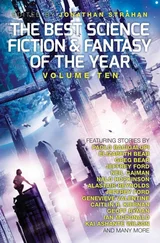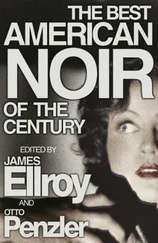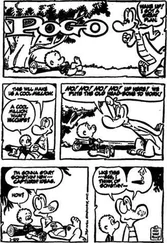“Variations on a Theme from Turandot ” by Ada Hoffmann. First published in Strange Horizons, May 2018. Copyright © 2018 by Carolyn Lamb. Reprinted by permission of Carolyn Lamb.
“The Storyteller’s Replacement” by N. K. Jemisin. First published in How Long ’til Black Future Month?, November 2018. Copyright © 2018 by N. K. Jemisin. Reprinted by permission of N. K. Jemisin.
“Dead Lovers on Each Blade, Hung” by Usman Malik. First published in Nightmare Magazine, November 2018. Copyright © 2018 by Usman Malik. Reprinted by permission of Usman Malik.
“Six Hangings in the Land of Unkillable Women” by Theodore McCombs. First published in Nightmare Magazine, February 2018. Copyright © 2018 by Theodore McCombs. Reprinted by permission of Theodore McCombs.
“What Everyone Knows” by Seanan McGuire. First published in Kaiju Rising 2: Reign of Monsters, November 2018. Copyright © 2018 by Seanan McGuire. Reprinted by permission of Seanan McGuire.
“When Robot and Crow Saved East St. Louis” by Annalee Newitz. First published in Future Tense Fiction, December 2018. Copyright © 2018 by Annalee Newitz. Reprinted by permission of Annalee Newitz.
“Poor Unfortunate Fools” by Silvia Park. First published in The Margins (Transpacific Literary Project), November 2018. Copyright © 2018 by Silvia Park. Reprinted by permission of Silvia Park.
“The Kite Maker” by Brenda Peynado. First published in Tor.com , August 2018. Copyright © 2018 by Brenda Peynado. Reprinted by permission of Brenda Peynado and Tor.com .
“What Gentle Women Dare” by Kelly Robson. First published in Uncanny Magazine, May/June 2018. Copyright © 2018 by Kelly Robson. Reprinted by permission of the author.
“Hard Mary” by Sofia Samatar. First published in Lightspeed Magazine, Issue 100, September 2018. Copyright © 2018 by Sofia Samatar. Reprinted by permission of Sofia Samatar.
“On the Day You Spend Forever with Your Dog” by Adam R. Shannon. First published in Apex Magazine, December 2018. Copyright © 2018 by Adam R. Shannon. Reprinted by permission of Adam R. Shannon.
“Sister Rosetta Tharpe and Memphis Minnie Sing the Stumps Down Good” by LaShawn M. Wanak. First published in FIYAH, Summer 2018. Copyright © 2018 by LaShawn M. Wanak. Reprinted by permission of LaShawn M. Wanak.
“I, Dalí, deep in a constant introspection and a meticulous analysis of my smallest thoughts, have just discovered that, without realizing it, I have painted nothing but rhinoceros horns all my life [. . .] I take another look at all my paintings and I am stupefied with the amount of rhinoceros my work contains.” What freedom! What liberation! An artist finding at the root of his work a consistent and undeniable truth: the cosmic beauty of the rhinoceros horn.
Unlike the parent of the squabbling kids, however, I’m less inclined to pull the van over to the side of the road than to drive the whole thing off an embankment, such is the level of my frustration.
In the interest of full disclosure, this is the full sum of my personal experience on this matter: I’ve been told by genre editors/publications that my work is “too literary” and not sufficiently “genre,” but I’ve never experienced the inverse (though I am assured by genre writers that it happens, and I believe them); I’ve argued with a lot of people about this subject online and in person; I was once described on Twitter as a “litfic writer” who was “Quite Put Out” by a genre writer’s mindless repetition of the above tropes—though I write fantasy, I don’t use or recognize the word litfic, and I am actually Permanently Put Out; I wrote fabulism at the Iowa Writers’ Workshop and two of the eight stories in my first collection at Clarion; people always seem to think that when I ramble on about gatekeeping I’m talking about literary fiction gatekeeping keeping out genre fiction, even though I am never, ever talking about that; I desperately wish I could believe in ghosts.
Or haven’t read in a long time, or haven’t read enough of, or haven’t read since you were a kid, or only read for school, or haven’t read with any kind of curiosity or depth and width.
And, if you’re a writer yourself, What might I learn from this story? How might it contribute to my work, my practice?
Sarah Gailey’s “STET,” Daryl Gregory’s “Nine Last Days on Planet Earth,” Ada Hoffmann’s “Variations on a Theme from Turandot ,” Theodore McCombs’s “Six Hangings in the Land of Unkillable Women,” P. Djèlí Clark’s “The Secret Lives of the Nine Negro Teeth of George Washington,” Nino Cipri’s “Dead Air,” and Silvia Park’s “Poor Unfortunate Fools.”
Particularly Usman Malik’s “Dead Lovers on Each Blade, Hung.”
Like LaShawn M. Wanak’s “Sister Rosetta Tharpe and Memphis Minnie Sing the Stumps Down Good,” Nana Kwame Adjei-Brenyah’s “Through the Flash.”
Adam-Troy Castro’s “Pitcher Plant,” N. K. Jemisin’s “The Storyteller’s Replacement.”
Brenda Peynado’s “The Kite Maker.”
Lesley Nneka Arimah’s “Skinned,” Kelly Robson’s “What Gentle Women Dare.”
Seanan McGuire’s “What Everyone Knows,” Annalee Newitz’s “When Robot and Crow Saved East St. Louis.”
Martin Cahill’s “Godmeat.”
Sofia Samatar’s “Hard Mary.”
Adam R. Shannon’s “On the Day You Spend Forever with Your Dog.”
Merrows are one of the few “vocal learners” in the animal kingdom, with an unparalleled ability to imitate human speech.
Another technique used to collect skin samples, which has proved controversial, is biopsy-darting. A dart with a hollow tip is shot into the side of the merrow. These darts were originally so large, the merrows tended to react violently when they were hit.
PCBs, despite being banned in 1979, continue to be linked to infertility in merrows. In 2011 the eastern black merrow species had an infertility rate of 60 percent.
Merrows live in social assemblages as pairs or triads consisting of a dominant female, an alpha male, and an immature juvenile or beta male. If the dominant mermaid of a triad dies, all subordinates seize the opportunity to ascend in rank and grow. The alpha male is poised to become female and rapidly changes sex to assume the vacated position, while the beta male completes the breeding pair by turning into a mature male in a short amount of time.
The catalog letter X is used for solo merrows. Merrows without pods rarely last more than five years on their own. They are rarely seen again.
Every merrow population has a unique call or “dialect.” These acoustic differences are used to identify membership of a pod and prevent inbreeding. Dr. John Bigg’s groundbreaking research on merrow dialects has since proven why outsider merrows have difficulty overcoming these “language barriers.”
Читать дальше












